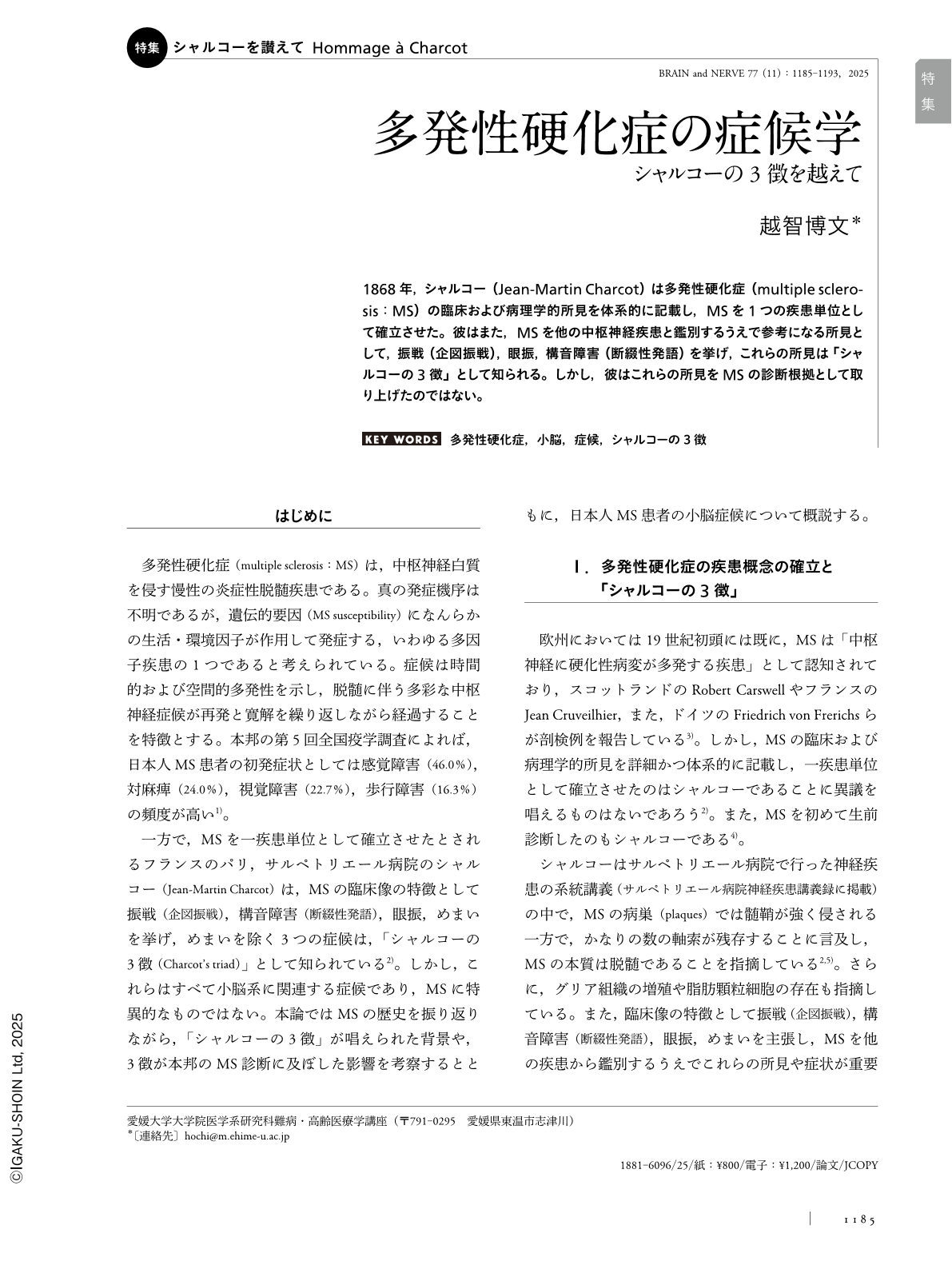Japanese
English
特集 シャルコーを讃えて—Hommage à Charcot
多発性硬化症の症候学—シャルコーの3徴を越えて
Symptoms and Signs of Multiple Sclerosis: Beyond Charcot's Triad
越智 博文
1
Hirofumi Ochi
1
1愛媛大学大学院医学系研究科難病・高齢医療学講座
1Department of Intractable Disease and Aging Science, Ehime University Graduate School of Medicine
キーワード:
多発性硬化症
,
小脳
,
症候
,
シャルコーの3徴
,
multiple sclerosis
,
cerebellum
,
symptoms and signs
,
Charcot's triad
Keyword:
多発性硬化症
,
小脳
,
症候
,
シャルコーの3徴
,
multiple sclerosis
,
cerebellum
,
symptoms and signs
,
Charcot's triad
pp.1185-1193
発行日 2025年11月1日
Published Date 2025/11/1
DOI https://doi.org/10.11477/mf.188160960770111185
- 有料閲覧
- Abstract 文献概要
- 1ページ目 Look Inside
- 参考文献 Reference
1868年,シャルコー(Jean-Martin Charcot)は多発性硬化症(multiple sclerosis:MS)の臨床および病理学的所見を体系的に記載し,MSを1つの疾患単位として確立させた。彼はまた,MSを他の中枢神経疾患と鑑別するうえで参考になる所見として,振戦(企図振戦),眼振,構音障害(断綴性発語)を挙げ,これらの所見は「シャルコーの3徴」として知られる。しかし,彼はこれらの所見をMSの診断根拠として取り上げたのではない。
Abstract
In 1868, Jean-Martin Charcot systematically described the clinical and pathological findings of multiple sclerosis (MS), establishing it as a distinct disease entity. Additionally, he noted the importance of the triad of tremors (intentional tremors), nystagmus, and dysarthria (scanning speech). While he did not propose them as diagnostic criteria, he recognized their value in differentiating MS from other disorders affecting the central nervous system.

Copyright © 2025, Igaku-Shoin Ltd. All rights reserved.


